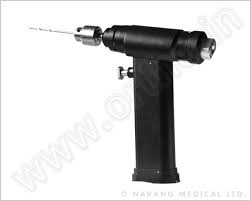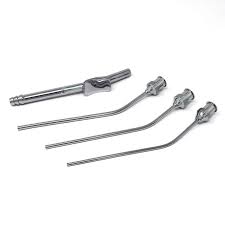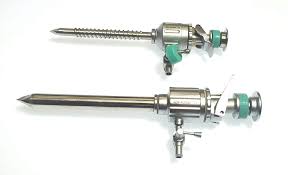Overview
The Orthopedic Bone Drill is a high-precision surgical instrument designed specifically for orthopedic procedures involving bone cutting, fixation, and reconstruction. It is an essential tool in surgeries such as fracture repair, joint reconstruction, and bone grafting. The drill enables surgeons to create accurate holes in bone for the placement of screws, plates, pins, and other fixation devices. Built for precision and reliability, orthopedic bone drills are vital to achieving stable bone fixation and successful surgical outcomes.
Design & Components
Orthopedic bone drills are engineered using medical-grade stainless steel, titanium, or high-quality polymers to ensure durability, corrosion resistance, and sterilizability. These drills may be powered by electricity, batteries, or pneumatic (air-driven) systems, depending on the clinical requirements.
Key components typically include:
-
Drill Handpiece – Lightweight and ergonomically designed for comfortable, fatigue-free handling.
-
Drill Bits – Available in multiple sizes and types (twist, cannulated, reaming, etc.) to suit various orthopedic applications.
-
Speed & Torque Control – Advanced drills come with variable speed and torque settings to provide control and precision.
-
Sterilization Compatibility – Most systems are autoclavable, ensuring safe reuse across procedures.
Applications in Surgery
Orthopedic bone drills are widely used in a range of procedures, including:
-
Fracture Fixation – Creating holes to insert screws or pins for stabilizing broken bones.
-
Joint Replacement Surgeries – Preparing bone surfaces in total hip, knee, or shoulder arthroplasty.
-
Spinal Surgery – Assisting in the placement of spinal screws and implants.
-
Orthopedic Trauma Surgery – Rapid drilling in emergency cases requiring internal fixation.
Surgeons depend on the drill’s high torque output and precise control to minimize bone trauma and ensure clean, accurate holes without slippage or overheating.
Safety & Ergonomics
Modern orthopedic drills are designed with safety features such as:
-
Thermal Protection – To reduce the risk of heat damage to bone tissue.
-
Slip-resistant Grip – Ensures safe handling during long procedures.
-
Quick Coupling Systems – Allows for fast exchange of drill bits without time loss.
Battery-powered drills enhance portability and eliminate cable clutter in the operating room, while pneumatic systems offer consistent power output with minimal maintenance.
Conclusion
The Orthopedic Bone Drill is a cornerstone of modern orthopedic surgery. Its precision, versatility, and robust design make it indispensable for achieving optimal surgical outcomes. Whether in trauma care or elective orthopedic procedures, this tool provides the reliability and control required for delicate bone manipulation and fixation. With continuous innovations in ergonomics and performance, the orthopedic bone drill continues to evolve as a critical instrument in surgical excellence.






Reviews
There are no reviews yet.